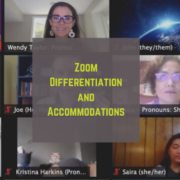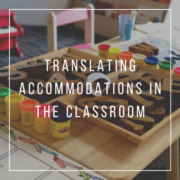Change What Your Child Thinks About Studying

For those of us not blessed with a photographic memory, study skills are essential to our ability to grasp and retain information and concepts. We often think of studying as something that students do in preparation for a test—and while this is often the case, we want to set different expectations for studying. We want young learners to recognize the study skills that benefit them the best and to discover that studying is more than just a test-prep practice.
For elementary schoolers, studying, like many other aspects of education, is a new concept. Because they are just beginning to form their understanding of how to study and why, the elementary grades offer a great opportunity to put positive studying routines into place.
Teach elementary schoolers that studying is for more than just preparing for assessments. Studying should be introduced as a regular routine for reviewing and solidifying all content, not just test topics. By viewing a studying routine as a consistent homework practice, there is less pressure put on students when it comes to studying for an exam. They will be used to the process and aware of the strategies that help them the best.
To introduce this regular homework routine, at first devote a small amount of time to the practice. Begin by reviewing the night’s completed homework assignment or material from school that day. Encourage rereading as a friendly method to get the process started. Explain to your child that rereading helps to cement information and allows him or her to memorize key details. Prompt them to mark and look up any terms or phrases that they do not recognize or remember from class. This shows them how to be active readers and take initiative if they do not know something.
A studying practice should not be made to feel like an additional homework assignment; if elementary schoolers see it as extra work, they are likely to avoid it. Use maybe 5-10 minutes of homework time to “review” important concepts from the day. Ask your child to summarize the reading material or math steps that s/he focused on during the assignment. You can also ask your child to “teach” you how to do one of the math problems that s/he practiced for homework. Encourage them to jot down any questions that they may want to ask their teacher tomorrow, or circle any concepts that they found to be confusing while practicing on their own.
Use the “peak/pit” conversation to get your elementary schooler to think critically about what s/he learned today. Ask your child to say his or her favorite and least favorite part of the school day. Then ask him or her to explain why something was especially interesting or boring. This allows them to truly reflect on new concepts that they are grasping, while providing you with some insight into their budding interests. Remember to share your own “peak/pit” with your child. This helps to demonstrate that learning is a life-long process—we adults may be through our schooling, but we haven’t stopped learning new things.
If your elementary schooler seems particularly interested in a certain topic, try to find age-appropriate magazine articles, books, or documentaries about related topics. Playing off of a child’s interests will make learning feel less like work and more like a hobby.






